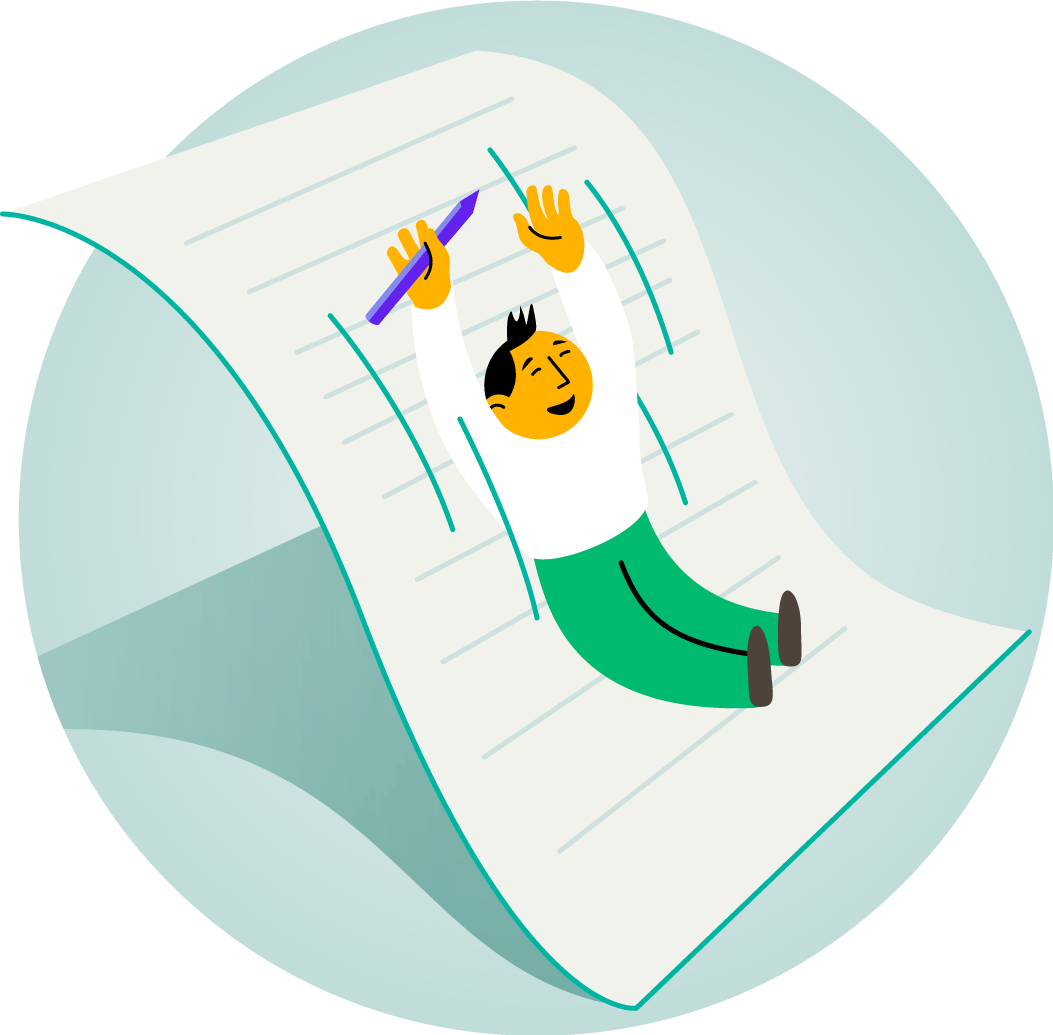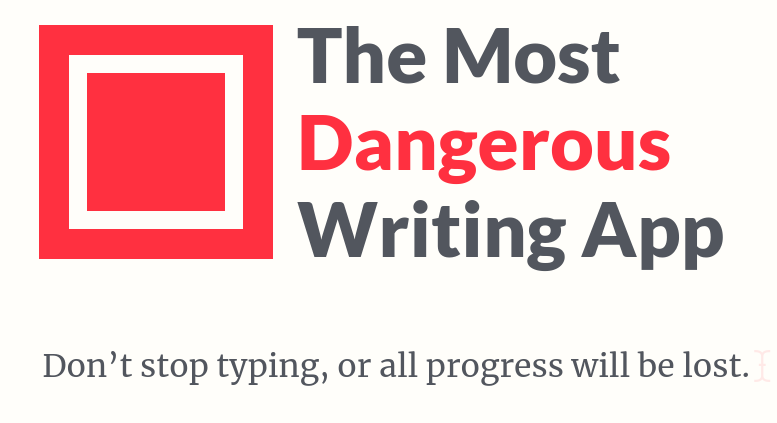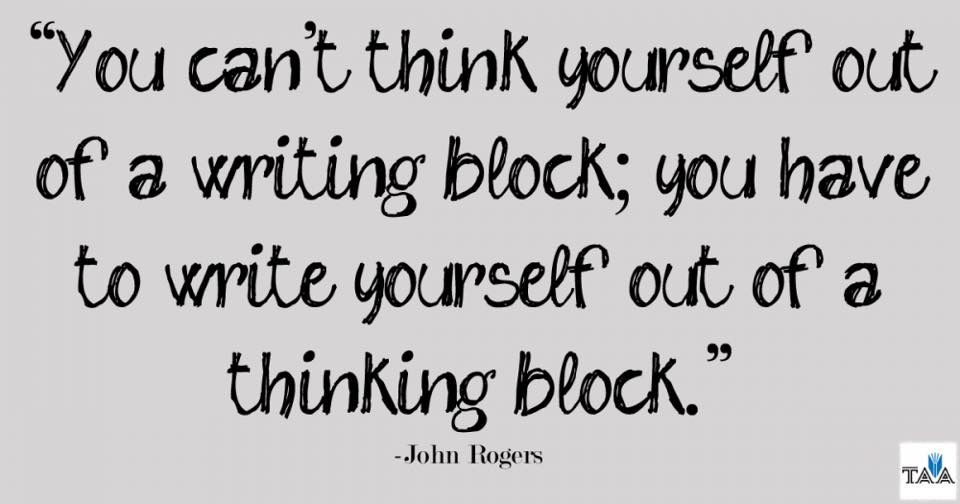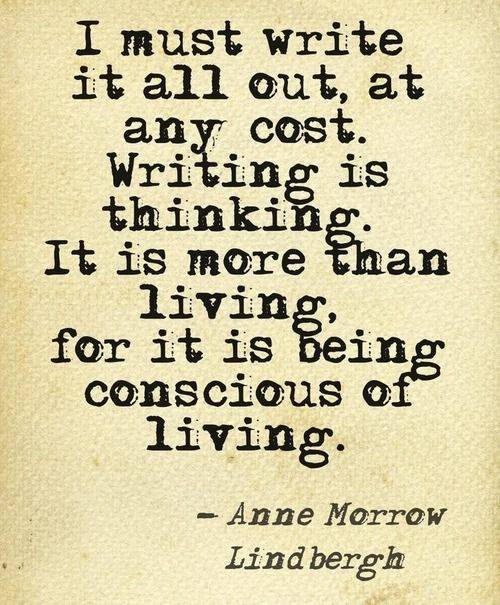
Bottom-up writers do it instinctivelly, top-down writers can learn it to combat the writer’s block. Freewriting is a simple tool that will not only improve your scientific writing, but also sharpen your thinking. And even make writing fun (again)! Try out the basic technique as well as its variations and experience the joyful freedom of writing.
Freewriting is an effective technique to shut down your “inner censor” and experience writing in the state of flow. The idea is to put down your thoughts as they arise, without evaluating them or caring for the language in which they get expressed. Such writing is efficient — and highly enjoyable. Letting go of your expectations and judgements feels great. Moreover, it’s easy to keep yourself focused as you are immersed in your thoughts, fully connected to the topic you are writing about.
Why is freewriting so powerful? The state of flow can only be achieved when we merge with the topic of our focus and let go of everything else. It turns out this allows us to write extraordinary texts that are clear and vivid, easy to follow and understand. Peter Elbow, the godfather of freewriting, made the following observations:
If you want readers to breathe life into your writing so that they get a powerful experience from it, then you must breathe experience into your words as you write. I don’t know why it should be the case that if you experience what you are writing about–if you go to the bamboo–it increases the chances of the reader’s experiencing the bamboo. But that’s the way it seems to work.
He explicitly notes that this advice holds for academic and scientific writing as well. So the practice of freewriting teaches us how to focus fully on what we write about, and this enables us to write impactful papers, proposal, and reports.
How to freewrite
Now I hope you are intrigued and can’t wait to try out some freewriting 😉 So let’s do it! The basic technique asks you to simply write without stopping for a set amount of time (usually 10-15 minutes). You can write by hand or type on a computer. However, there is no need to rush: write as fast or as slowly as is comfortable for you, just keep the writing fluent. So don’t correct typos, and don’t go back to read what you have written. Use a timer to measure the time, so you can fully concentrate on writing. Let the words come out as they wish — don’t judge or evaluate them. Remember, the practice itself is the sole goal here. It doesn’t matter whether what you write is great or crap. Just continue and enjoy the process 🙂
To hell with words! See something.
Peter Elbow
You are free to write about anything that comes to your mind. What you write is strictly private, so relax the control and allow your hands to write whatever they want. If you get stuck and have nothing to write about, you can repeat the last word or type nonsense until an idea pops into your mind. You can also reflect on the fact that you have nothing to write about (like “It’s funny, but now my mind is blank. Why is it so? …”) and let the thoughts unfold from there. In general, posing questions without searching for answers usually triggers some thought. The main point is really just to keep your hand or fingers moving, producing word by word.

If you want to make sure that you don’t make (unconscious) pauses in your writing, you can try The Most Dangerous Writing App. Here, if you stop typing, the text starts to fade away, and you need to hit the keyboard again to prevent it from disappearing completely. But don’t worry: if it does disappear, you can retrieve it via email.
Variations
Focused freewriting is a variation of freewriting where you set yourself a topic and try to stay on the topic as you freewrite. When you catch yourself diverting away from the topic, just gently return to it again. It’s practical to stimulate your writing with an appropriate prompt. For example, if you want to describe a figure, you can start with the prompt “This figure shows …”. But don’t forget that this is still freewriting: so set a timer, and try to write fluently. However, since the goal is to write on a certain topic, it might be useful to pause when your mind goes blank and “try to feel inside for what you are getting at”, as Peter Elbow is advising.
Loop writing is helpful when you want to deepen your thinking about a certain topic. The procedure goes as follows: First, freewrite on a chosen topic for 5-10 minutes (focused freewriting). Next, read the text you have written and mark up interesting ideas, sentences or phrases. Then choose one of the marked-up passages as a topic/prompt for the next round of directed freewriting. Repeat this process 3–5 times (or until you are satisfied with the result).
Benefits and applications
Regular freewriting practice brings ample benefits to your writing as well as your thinking. Already 10 minutes per day manifest clearly within a couple of weeks.

- Warm-up & brain dump Reduce procrastination at the beginning of your writing session (or your work day) by freewriting for 10 minutes. Writing down all the thoughts and todos swirling in your head will clear your mind and prepare it for work. You can also use this time to contemplate about your next tasks and how to best approach them.
- Write to think Use freewriting to develop ideas, understand the ideas of others, reflect about your work, etc. Writing is a different mode of thinking — it helps to reduce the cognitive load of complex thinking and often results in creative break-throughs. Moreover, it allows you to follow your reasoning in detail and spot potential errors and gaps.
- Find the right words for your ideas Accurately describing research results is not easy: we need to put into words complex phenomena unfolding in space and time. So freewrite regularly in your lab book or research journal: document your research activities, reflect about the work of others, ponder about open questions, etc. With time, you will evolve an appropriate vocabulary that allows you to easily describe your research in articles or a thesis.
- Recycle your texts When you freewrite about your research, you create the so-called transfer texts that can be recycled as building blocks in manuscripts and project reports. Not everything you freewrite is gold, for sure, but those bits that make sense stand out as lively and captivating — qualities that are in high demand in the scientific literature!
- Learn to write in an engaging and comprehensible way With continued practice, the freewriting qualities will transfer into your regular writing as well. As a result, your scientific texts will be interesting to read and easy to understand.
- Write faster and with less struggle Daily freewriting practice helps you develop healthy writing habits: you will no longer obsess about perfection or lose time with procrastination. You learn to sit down at your computer and write — and even enjoy the process! Consequently, you will progress faster and suffer less when writing.
- Develop your (scientific) voice It’s a misunderstanding to think that scientific writing should not have a “voice”. It is not wrong if author’s personality shines through their words — it does not make their writing less “objective”. You just get to feel the scientific persona who has written the text — and objectivity is a property of this persona. In fact, author’s “voice” — manifested through the specific choice of words, rhythm of the text, even punctuation — is exactly the quality that makes a text captivating. However, you can’t get “voice” into your text by elaboration and (over-)thinking. Quite on the contrary: “To get voice into your words you need to learn to get each word chosen, as it were, not by you but by the preceding word. Freewriting exercises help you learn to stand out of the way.” (Peter Elbow)
- Improve your active language skills Especially when English is not your mother tongue, you might feel like your active vocabulary and fluency is limited, up to the point where it may restrict you in your (scientific) writing. Regular freewriting is a great way to transfer some of your passive vocabulary into active use, expanding your language possibilities and increasing your fluency in speaking and writing. You need to freewrite in the lanugage you want to improve, obviously, but feel free to write a word or two in your mother tongue or other language, if that’s what your mind is offering you.
Exercises and Writing prompts
Do you admire the possible benefits of freewriting and would like to get them, too? Then don’t wait too long and start with a regular practice! As an inspiration, here are some suggestions for directed freewriting including example writing prompts:
- Describe your scientific result Take a recent research result of yours (ideally one that you haven’t completely understood yet, in the form of a figure, table, equation, etc.), and place it next to your computer so that you can glance over it as you write. You will do three rounds of freewriting for 5 minutes each. Here are the prompts for the three rounds:
This figure shows …
I obtained the result in the following experiment/calculation/simulation …
The result implies/means …
- Contemplate about an open question or unsolved problem Use directed freewriting or loop writing. You can start with one of the following prompts:
Recently, I am wondering …
I have hard time to understand …
- Reflect upon your writing or life in general. As a prompt, you can use any quote or thought that intrigues you and sparks a reaction — be it positive or negative. Here are two examples related to the topic of freewriting — so pick one according to your gut feeling, set a timer for 10 minutes, and write down whatever comes to your mind when you read the quote:

